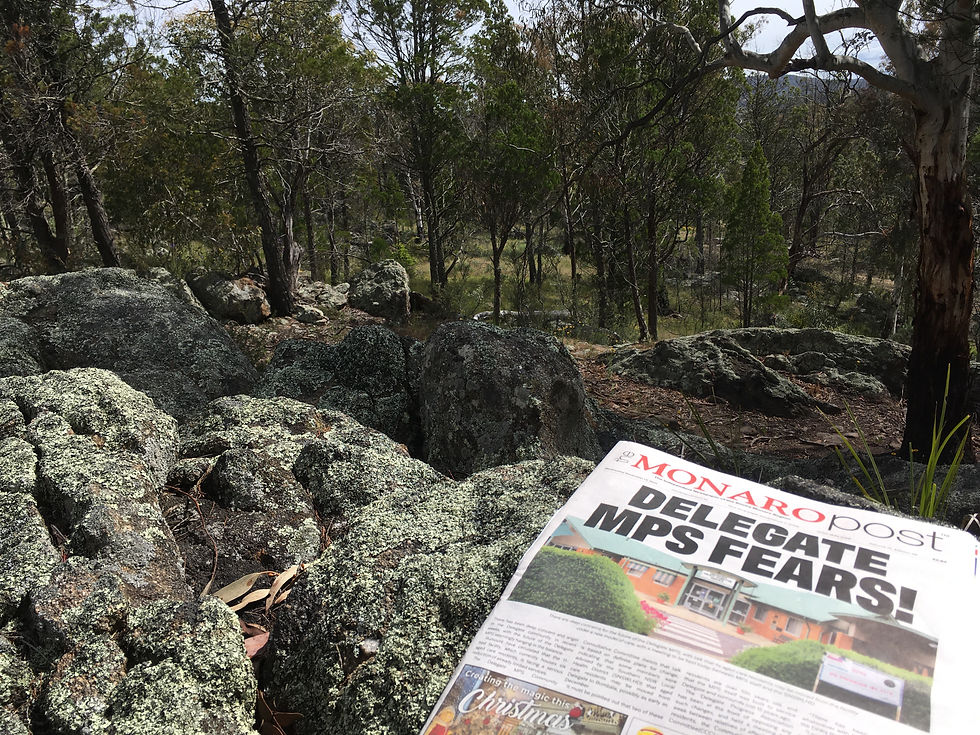More than the ski town I thought it was
- alisonmcadam
- Jan 10, 2022
- 4 min read
Updated: Jan 8
Seventy-two pages. That’s got to be one of the largest weekly country newspapers in Australia. That was the size of The Monaro Post the week I visited. They did have some big events helping to boost pagination – it was the lead up to Christmas, there were council elections looming and the annual race meet was coming up too. Each of these things increased advertising and therefore the number of pages in the paper. But still, that’s a big paper!

The team at The Monaro Post seem more than capable of handling it though. Led by editor and part owner Gail Eastaway, the masthead just seems to keep going and growing. They survived the worst of covid, continue to increase their paying audience by more than any other audited masthead under the Country Press Australia banner, and have plans for the future. These things set this masthead apart from many in the local news sector in this country. This paper appears to be the prime example of a masthead bucking the trend of decline. So far, it’s the leading light in my exploration of local journalism in Australia.
I’m beginning to see that people and places are among the key features of sustainability of local news. The people who run the paper and the place they serve appear to be crucial to the success, or otherwise, of the town’s news provider, and the two seem to need to be intertwined to the point that they can’t be untangled – each is part of the other.

I could wax lyrical about the people who produce the news for the Monaro district, they are the hard-working dedicated types you will find in many small newsrooms around the country. And they are connected to their community in numerous ways - involved in groups, charities and clubs all over the place. But what I want to focus on more here now is the place rather than the people. That’s because I’m considering a town’s prosperity and how that is linked to the success of the local paper.
Statistics will tell me if the population of Cooma, the Monaro district’s largest town and the home base of The Monaro Post, has gone up over the past five years (the latest ABS statistics are due out in the middle of this year), but the town certainly seems to be thriving to this visitor’s eye.
It’s a good-looking place, nestled in among hills that stretch to mountains in the distance. The streets and parks are neat and clean. There seems to be plenty going on, with a mix of people out and about on the town’s streets – old, young, mums, tradies, professionals in office gear. The cafes – and there’s a few – are busy. There are two big supermarkets, a taxi rank, schools, big business (energy giant Snowy Hydro is based here), branches of government departments (such as Service NSW and Corrections Services), and takeaway giants such as McDonald’s. There are good amenities too, such as a swimming pool and a stage in the town’s main park.
If I compare Cooma with the other towns I have visited so far for my field work, I would have to say that this Snowy Mountains village has more of everything. It’s a bit busier and a bit bigger. I thought it would be a ski town, servicing the snow-bound crowds in winter and therefore a bit empty in the other seasons, but that certainly wasn’t the case. I visited in summer and it was clear that, although tourism might be an important element, it is not the only thing propping up this town. This is an all-year-round town with plenty going on.

The houses seem mixed, there’s some lovely old buildings, especially some churches and schools, and there’s history in this place. But there’s also the usual cheaper smaller houses in the suburbs, like fibro shacks initially maybe built for Snowy Hydro workers. People are friendly and say hello when you are walking. There’s also signs of development here, some roadworks in town and one new house being built that I see. This is something I haven’t observed in the other places I’ve visited for my research. It could be that I haven’t ventured to the outskirts of towns enough – which is where most new builds happen – but there didn’t seem to be much renovating or home construction in the other towns. Cooma seems on the up, whereas Bairnsdale seemed steady and Donald seemed teetering on the edge of decline.
The Monaro Post is the youngest masthead in my case study group. Energy and liveliness are characteristics of youth and this paper does display those things, but so does the town. Each seems to be feeding off the other in a good way, boosting each other up and keeping each other going. In a chicken-and-egg-type question: what comes first, a lively masthead or a lively town? Whatever the answer, one thing seems clear - the two are linked.



Comments